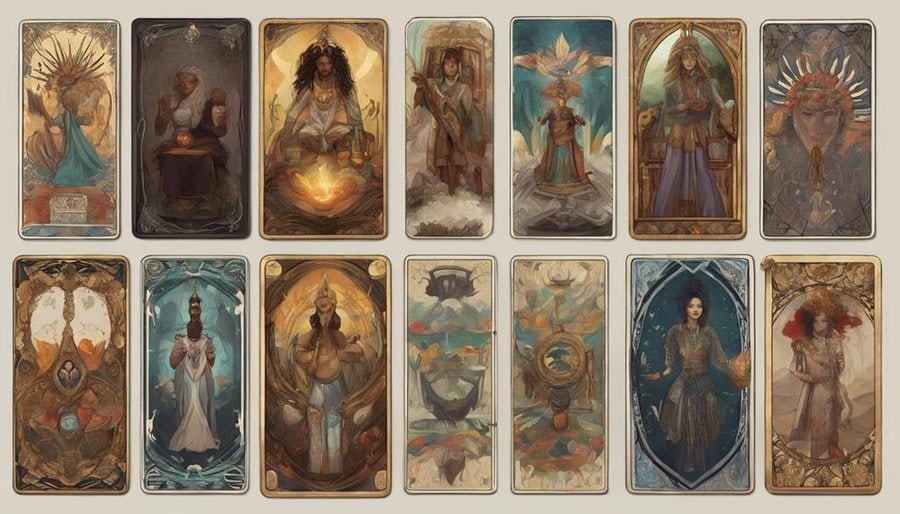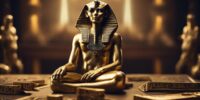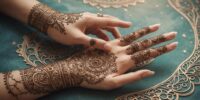When Tarot Art Became a Reflection of Cultural Diversity

Tarot art reflects cultural diversity by incorporating symbols, themes, and imagery from various cultural traditions. This diversity can be seen in the different versions of tarot decks that have been created around the world. Each deck may draw inspiration from different cultural sources, such as ancient mythologies, religious beliefs, or historical events. As a result, tarot art serves as a reflection of the rich tapestry of human culture and history.
Furthermore, the diversity in tarot art allows individuals to connect with the cards on a personal and cultural level. People from different backgrounds may find resonance in specific symbols or themes that are familiar to them. This cultural diversity adds depth and complexity to the practice of tarot reading, allowing for a more nuanced interpretation of the cards.
In conclusion, the cultural diversity in tarot art not only enriches the visual aesthetics of the cards but also deepens the spiritual and symbolic meanings associated with them. By embracing a wide range of cultural influences, tarot art continues to evolve and adapt to the diverse perspectives of its practitioners.
Historical Roots of Tarot Art
Tracing back through centuries, the historical roots of tarot art reveal a rich tapestry of cultural influences and spiritual significance. The origins of tarot art can be traced to the 15th century in Europe, where the cards were initially used for playing games before evolving into tools for divination and self-reflection. The artistic evolution of tarot decks mirrors the changing beliefs, values, and artistic styles of different time periods and regions.
Historically, tarot art drew inspiration from diverse sources such as medieval symbolism, Renaissance art, and Eastern mysticism. Each tarot deck's unique imagery reflects the cultural context in which it was created, offering a window into the beliefs and values of that society. As tarot spread across continents and through different social classes, its artistry adapted to encompass a wide range of cultural influences, resulting in a diverse tapestry of artistic expression.
Understanding the historical origins and artistic evolution of tarot art provides insight into the interconnectedness of human creativity and spirituality throughout the ages. It serves as a reminder of the universality of artistic expression and the enduring power of symbolism to transcend cultural boundaries.
Evolution of Tarot Imagery
The evolution of tarot imagery reveals a fascinating journey of artistic transformation and cultural adaptation, reflecting the dynamic interplay between creativity and societal influences. As tarot decks have evolved over the years, the interpretations of the cards have also shifted, incorporating new symbols and meanings that speak to the changing cultural landscape. This evolving interpretation of tarot imagery showcases the flexibility and resilience of this ancient art form, allowing it to remain relevant and meaningful in diverse contexts.
To illustrate the evolution of tarot imagery, let's explore into a comparison of traditional tarot symbols with their modern interpretations:
| Traditional Symbol | Modern Interpretation |
|---|---|
| The High Priestess | Intuition, mystery |
| The Tower | Transformation, upheaval |
| The Empress | Nurturing, abundance |
| The Fool | New beginnings, spontaneity |
This fusion of traditional and contemporary elements in tarot imagery demonstrates the richness and depth of cultural influences that continue to shape this mystical practice.
Influence of Diverse Cultural Perspectives

Drawing upon a myriad of cultural perspectives, the intricate tapestry of tarot art weaves together a harmonious symphony of diverse influences. Tarot, once steeped in European tradition, has now blossomed into a global phenomenon, embracing intersectional perspectives and multicultural interpretations. Each card reflects a unique blend of symbolism, drawing from rich cultural histories across the world. The fusion of these diverse elements creates a dynamic visual language that speaks to the universal human experience.
Through the lens of diverse cultural perspectives, tarot art has evolved beyond its origins, transcending borders and boundaries. Artists now infuse their decks with a rich tapestry of traditions, offering a more inclusive and expansive view of the world. This infusion of multicultural influences not only enriches the visual landscape of tarot but also deepens the spiritual and symbolic meanings embedded within each card.
As tarot continues to evolve, the influence of diverse cultural perspectives serves as a confirmation to the power of unity in diversity, weaving together a narrative that celebrates the interconnectedness of all cultures and peoples.
Representation in Modern Tarot Decks
Modern tarot decks today reflect a rich tapestry of cultural influences, embracing diversity in their artistic representations. By making inclusive imagery choices, these decks endeavor to represent a broader spectrum of human experiences and identities.
The integration of cultural symbolism adds depth and meaning, fostering a more nuanced and inclusive tarot practice.
Diverse Artistic Influences
Incorporating a myriad of artistic influences, modern tarot decks richly reflect cultural diversity in their illustrations. Artists draw inspiration from various sources, resulting in decks that embrace cultural fusion and artistic diversity. The following aspects highlight the diverse artistic influences found in modern tarot decks:
- Global Art Movements: Incorporating styles from around the world.
- Traditional Folk Art: Infusing decks with elements of traditional cultural art.
- Contemporary Pop Culture: Reflecting current societal trends and influences.
- Historical Art References: Paying homage to diverse artistic periods.
- Personal Artistic Interpretations: Artists infuse their unique cultural backgrounds into the cards.
Through these diverse influences, modern tarot decks serve as vibrant reflections of a world rich in cultural tapestry.
Inclusive Imagery Choices
The diverse artistic influences shaping modern tarot decks seamlessly intertwine with inclusive imagery choices, reflecting a broad spectrum of representation in the deck's symbolism.
Inclusivity in tarot art has become a focal point for many contemporary deck creators, who purposefully incorporate diverse cultural reflections into their artistic choices. These deliberate decisions empower individuals from various backgrounds to see themselves mirrored in the cards, fostering a sense of connection and inclusiveness within the tarot community.
By consciously selecting imagery that embodies a wide range of identities and experiences, tarot artists aren't only honoring the richness of human diversity but also inviting a deeper exploration of the universal themes present in the cards.
Through these thoughtful representations, modern tarot decks serve as powerful tools for self-reflection and personal growth.
Cultural Symbolism Integration
Cultural symbolism in modern tarot decks blends diverse representations, enriching the deck's imagery with a tapestry of global heritage and meaning. This integration fosters a deeper connection to various cultural backgrounds, offering a more inclusive and enriching experience for tarot enthusiasts. The infusion of symbolic diversity not only reflects the richness of different traditions but also allows for a more nuanced interpretation of the cards. Embracing cultural integration in tarot art opens up a world of possibilities, encouraging exploration and understanding across boundaries.
- Multicultural Archetypes: Incorporating symbols from various cultures.
- Global Mythological Influences: Drawing inspiration from worldwide myths and legends.
- Traditional Rituals and Practices: Infusing tarot with cultural rituals and practices.
- Language and Script Diversity: Including diverse languages and scripts in card designs.
- Sacred Geometry from Different Cultures: Utilizing geometric patterns from diverse cultural backgrounds.
Impact on Tarot Readings
Diverse cultural influences shape the way Tarot readings resonate with individuals. The incorporation of cultural symbolism in Tarot decks has a profound impact on how readings are interpreted and understood. Each culture brings its unique perspective and interpretation to the cards, enriching the depth and complexity of Tarot readings. By infusing diverse cultural symbols into the Tarot, readers are provided with a broader range of meanings and connections to draw upon during readings, allowing for a more nuanced and inclusive approach to divination.
| Cultural Symbol | Interpretation |
|---|---|
| Lotus Flower | Enlightenment |
| Dragon | Strength |
| Maori Patterns | Connection |
| Ankh | Eternal Life |
These cultural symbols add layers of meaning and significance to the cards, offering readers a more holistic and culturally diverse experience during Tarot readings. Embracing cultural diversity in Tarot not only enriches the practice but also fosters a deeper understanding and appreciation for different belief systems and traditions.
Celebrating Cultural Diversity Through Tarot

One of the most beautiful aspects of tarot is its ability to showcase diverse imagery that reflects various cultures and traditions.
By incorporating global symbolism, tarot decks can resonate with individuals from all corners of the world, offering a sense of inclusivity and connection.
Celebrating cultural diversity through tarot not only enriches the art form but also fosters a deeper appreciation for the richness of different belief systems and perspectives.
Diverse Tarot Imagery
Embracing an array of artistic interpretations, the tarot cards beautifully embody the vibrant tapestry of global cultures. Each deck reflects the essence of cultural fusion and artistic expression, offering a lens into the world's diverse interpretations. Through the lens of tarot, a celebration of global inspirations and diverse interpretations unfolds, inviting individuals to explore beyond their own cultural boundaries.
- Tarot decks feature symbolism from various cultures, blending traditions seamlessly.
- Artists infuse their decks with elements from folklore, mythology, and spiritual practices worldwide.
- Colors, symbols, and figures in the cards draw inspiration from a multitude of cultural backgrounds.
- Traditional tarot imagery is reimagined to incorporate diverse perspectives and narratives.
- Each card tells a story that transcends borders, inviting universal connections and understanding.
Global Symbolism Influences
The rich tapestry of global cultures intricately weaves its influence into the diverse symbolism found within tarot art. Through centuries of cultural exchange, tarot cards have absorbed the essence of different traditions, creating a symbolic fusion that reflects the interconnectedness of humanity.
Each card tells a story rooted in various cultural beliefs, mythologies, and philosophies, offering a universal language that transcends borders. This global symbolism influences not only the artistic representations but also the meanings and interpretations associated with each card.
Embracing this diversity allows for a deeper understanding of the human experience and a celebration of the richness found in our interconnected world. Tarot art becomes a mirror reflecting the beauty of cultural exchange and the power of symbolic fusion.
Inclusivity in Tarot
Celebrating the diverse cultural tapestry through tarot art illuminates the interconnectedness and beauty of humanity's shared experiences. Tarot decks now embrace inclusivity and cultural representation, reflecting the richness of global artistic expression. This shift towards diversity celebration in tarot not only honors different heritages but also fosters a sense of belonging for individuals from all walks of life.
Through inclusive imagery and symbolism, tarot cards become mirrors that resonate with people of various backgrounds, fostering empathy and understanding. Embracing cultural diversity in tarot enriches the spiritual journey for all seekers, highlighting the universal truths that connect us beyond borders and differences.
- Embracing diverse cultural symbolism
- Fostering inclusivity through artistic expression
- Honoring heritage and traditions
- Encouraging empathy and understanding
- Uniting individuals through shared experiences
Tarot Art as a Reflection of Society

Representing a myriad of societal aspects, tarot art captures the essence of cultures and beliefs through intricate symbolism and imagery. Through artistic interpretations, tarot cards serve as mirrors reflecting the diverse societal reflections of the communities from which they originate. Each card embodies a unique story, drawing from the cultural diversity and creative expressions of its creators. The artwork encapsulates societal norms, values, and challenges, offering a window into the collective consciousness of different groups.
Tarot art has the power to transcend boundaries and connect individuals through shared experiences and common themes. By delving into the various symbols and archetypes depicted in tarot decks, one can gain insights into the values and traditions upheld by different societies. The intricate details and rich symbolism present in tarot art not only make it visually appealing but also provide a deeper understanding of the interconnectedness between art, culture, and society. Ultimately, tarot art stands as a proof to the vibrancy and complexity of human civilization.
Future Trends in Cultural Tarot Art
Embracing cultural evolution, the future of tarot art promises a dynamic fusion of tradition and innovation. As society continues to evolve, so does the representation of cultural diversity in tarot art. Here are some future trends to look out for in cultural tarot art:
- Inclusive Imagery: Expect to see tarot decks that feature a wide range of cultural backgrounds, ethnicities, and identities, celebrating diversity fundamentally.
- Traditional Symbols with a Modern Twist: Artists will likely reinterpret traditional tarot symbols through a modern cultural lens, infusing new meanings and perspectives.
- Collaborative Projects: Future tarot decks may involve collaborations with artists from different cultural backgrounds, creating decks that are truly multicultural essentially.
- Cultural Storytelling: Tarot art could increasingly incorporate narratives and symbols from various cultural mythologies, weaving together diverse storytelling traditions.
- Global Influences: Artists may draw inspiration from a variety of global cultures, resulting in tarot decks that reflect a rich tapestry of worldwide influences.
Frequently Asked Questions
How Can Individuals Incorporate Cultural Diversity Into Their Personal Tarot Practice?
Individuals can enrich their personal tarot practice by exploring traditions from various cultures, celebrating diversity through diverse deck choices, incorporating symbols that resonate personally, and honoring the interconnectedness of different belief systems within the cards.
Are There Specific Tarot Decks That Focus Specifically on Cultural Diversity?
Exploring inclusivity in tarot decks has led to a beautiful array of options. Many decks now embrace diverse symbolism, celebrating various cultures and perspectives. These decks offer a rich tapestry of wisdom for all seekers.
What Role Do Artists Play in Ensuring Cultural Representation in Tarot Art?
Artists hold the key to cultural inclusion in tarot practice. Their responsibility lies in ensuring diverse representation, enriching the tapestry of tarot art. By weaving in varied cultural symbols, they honor the universal essence of this ancient tradition.
How Has the Digital Age Influenced the Representation of Cultural Diversity in Tarot Decks?
In the digital age, tarot deck creators leverage digital innovation to bring diverse cultural representations to life. This artistic expression opens doors to rich, inclusive narratives, fostering a deeper connection between diverse communities and the mystical world of tarot.
Are There Any Controversies or Criticisms Surrounding the Portrayal of Cultural Diversity in Tarot Art?
Controversial depictions in tarot art have sparked heated debates. Concerns over cultural appropriation often arise when diverse symbols and traditions are misrepresented. It's crucial for artists to approach cultural diversity respectfully and authentically.











